In this day and age, firearms have become highly customizable. Somewhat jokingly, I’ve referred to them as Lego’s for adults. They can be modified, customized, and tweaked to your liking. Upgrading parts, coatings, texturing, and other “gunsmithing” has become the norm. While some may decry firearm modifications, they are as old as firearms themselves. For reference, the “Fitz Special,” where one of the modifications is the partial removal of the trigger guard, is a controversial but well-known firearms modification from the wheelguns of yesteryear.
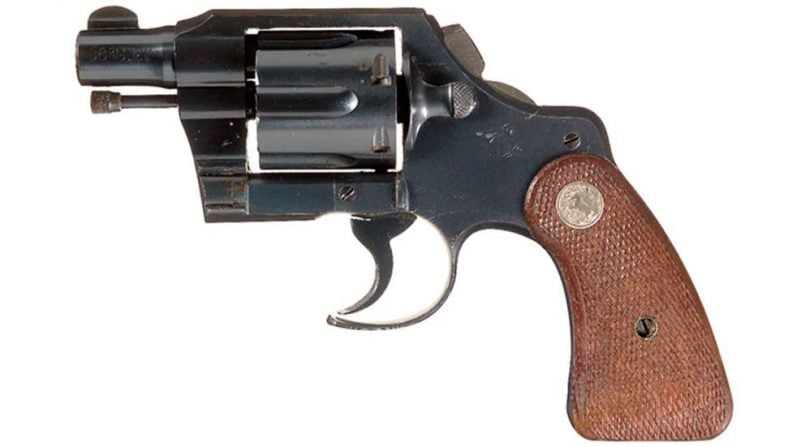
The ultimate goal of any defensive firearm modification is to enhance performance and capability. Unfortunately, some gun owners fall into the “Gas station knife” trap with their firearms: they look cool, but their appearance does nothing to make them practical or improve their effectiveness. Ultimately, several factors should be considered prior to modifying anything on a firearm.
Is it practical?
Does the firearm modification enhance its reliability? Does it enhance your performance? If the answer is “no” to both of these questions, don’t do it. It’s not worth the money to make a firearm used to preserve innocent lives “pretty.” It’s worth more to make it practical.
Can I defend it to 12 strangers?
If you haven’t caught the reference, this is the jury that will decide to convict — or exonerate — you in the event of a lethal force encounter. The internet is full of cringe-worthy examples: “Smile! Wait for flash” on the muzzle crown, Punisher skulls on Glock backplates, vulgar expressions on AR dust covers, and so on. While meant in jest and humor by most, these slogans and modifications elicit expressions of disgust and horror from those who just saw that firearm used to harm or kill another human being. Ultimately, these examples do not present well in the court of law and don’t belong on a defensive firearm.
Is it reliable?
There are plenty of inexpensive upgrades available for firearms. However, there’s a distinct difference between inexpensive and cheap. Quality parts and components are important. Some folks are willing to skimp and “get a good deal” on parts for their firearms when they’re fully capable of spending a little more for higher quality. Good deals aren’t part of a reliable defensive firearm. Good quality is.
Firearm Modifications
When looking at the array of possible firearm modifications, there are plenty of options out there, and the list is endless. However, what should be considered a justifiable modification versus one that may extend into the gas station knife realm? Here are a few suggestions, considerations, and lessons to keep in mind before making any changes to a defensive firearm.
Sights and Optics
This topic is a bit of a no-brainer. You can’t hit what you can’t see, and you can’t hit what you can’t properly take aim at. If you ask 10 firearm enthusiasts what sights they use, you’ll probably get 10 different answers. The preference is largely up to the user. I’ve grown accustomed to Ameriglo Hackathorn and Trijicon HD sights. The blackout rear and bold front sight have proven reliable on the range. Others may have a different preference.
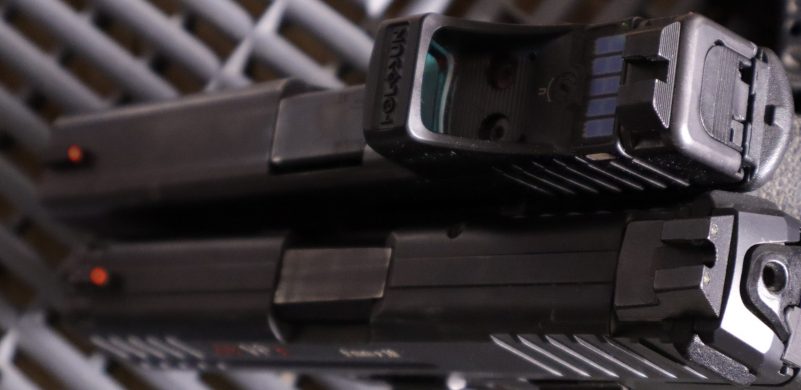
Ultimately, the end-user has to decide on what sight or optic suits them best. In many cases, this is trial and error. However, the ultimate purpose of any upgraded sight or optic is to enhance accuracy. Anything outside of that scope is pointless and futile. Just because a new sight looks cool doesn’t mean it will work for you and your self-defense needs.
Trigger
Trigger modifications are a hot-button topic for many instructors and legal experts. Personally, there’s a balance to everything. A one-pound single-stage trigger in a home defense AR is not recommended. The risk of a negligent or unintended discharge is too great. However, a 15-pound trigger pull on a concealed carry handgun does nothing to enhance accuracy or precision. Ultimately, what upgrades are you capable of articulating as improving your ability to hit the target?
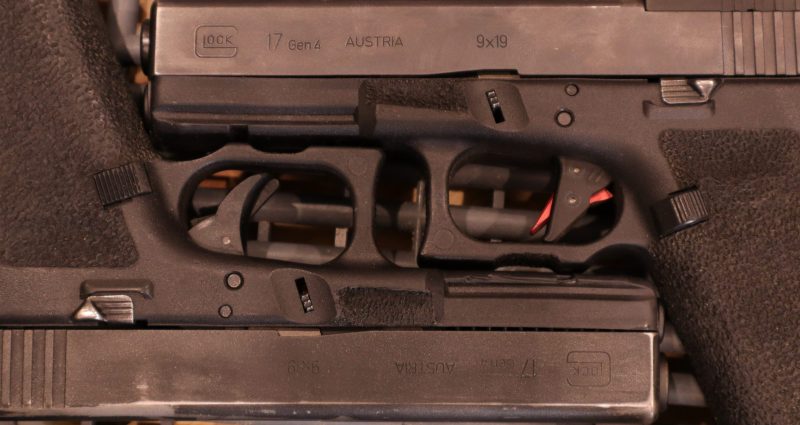
With most modern firearms, an appropriately trained and skilled shooter should be able to shoot them accurately and effectively. However, some factory triggers benefit from upgrades. While I shoot well with a factory Glock trigger, I’ve transitioned to an upgraded trigger in the last few months. I currently use a Zev Pro Flat Face Trigger for my defensive handgun, but I opted to keep the stock springs in it. The trigger pulls at the same weight as the factory trigger but has slightly shorter pre-travel, a shorter reset, and a better feel with the flat face over the curved factory Glock trigger face.
All of these factors allow for more precise shot placement and faster, accurate follow-up shots (if needed) to end a violent encounter. In recent years, many law enforcement agencies have approved trigger upgrades to patrol rifles, with some following suit with handguns. The goal isn’t a “hair” trigger but to minimize the error induced by a longer, grittier trigger pull. If the upgrade minimizes error without increasing the risk of liability, e.g. a negligent discharge, why not do so?
On the flip side, know your audience and where you live and travel. Some places, no matter how rational your thinking is, are not friendly to such logic when stepping into court.
Coatings
Gun coatings have come a long way from the days of nickel-plating, bluing, and Parkerizing. Cerakote, Durakote, and any other number of gun coatings are readily available and relatively inexpensive. Some companies and gunsmiths offer astounding custom firearm coatings. For defensive firearms, this area has some leeway but needs to remain reasonable. I’ve had some firearms custom coated to personalize them or, with one duty firearm, prevent a recurring rust problem. However, my daily concealed carry isn’t adorned with Deadpool or Punisher graphics. It’s coated conservatively.
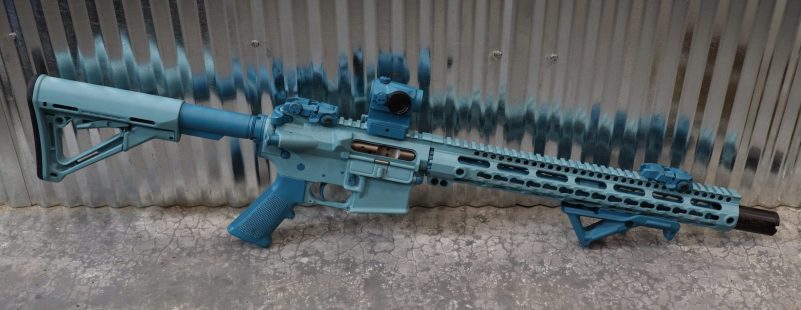
Some years ago, my wife asked for her AR to receive a custom blue Cerakote paint job. Why? She said I wouldn’t steal her rifle if it was blue. While this rifle is predominantly a range tool, she has kept it staged for defensive use. Ultimately, firearm coatings never hurt as long as they avoid the offensive and maintain the integrity and reliability of the firearm.
Internal Components
While triggers are somewhat controversial, this topic isn’t. Upgrading an extractor to enhance extraction is a no-brainer if you want to do it. A different magazine or slide release to improve function is also reasonable. However, use caution with these upgrades. A competition magazine release is nice on the range but inconvenient when it inadvertently releases the magazine during concealed carry. The same goes for slide releases.
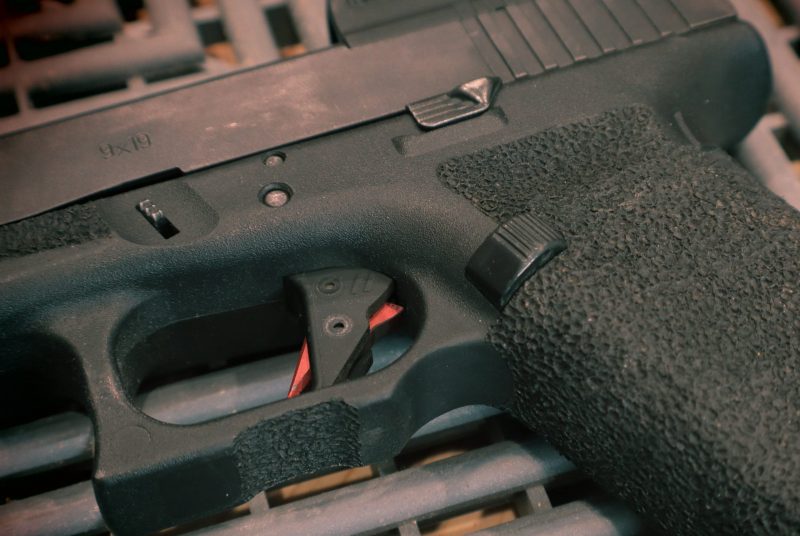
Recently, colorful and “stylish” parts have become more commonplace on firearms. While these things may look cool, they do little to nothing to improve the firearm’s performance. This may fall into the realm of firearm coatings and be a user preference, but I’m of the opinion that money is better spent on upgrades and modifications of practical use.
Grips
Throughout my shooting experience, I’ve seen a number of shooters struggle to operate a firearm due to the grip. More often than not, the grip is too large or not suited to the shooter’s hand type. Over the years, grip reductions, stippling, and modifications have become increasingly popular to help shooters maintain a proper firing position on the firearm. In short, most grip modifications are practical and sensible. If you can’t grip the gun to shoot controllably and accurately, that’s a tremendous safety hazard and liability.

While grip modification makes sense in most instances, some shooters gravitate towards modifications like “gas pedals”, undercuts, and stippling more for appearance. Stippling on a firearm looks cool, but some have gone to the extreme to achieve a unique appearance that serves no practical purpose. Ultimately, before swapping grips on a custom 2011 or getting laser stippling done, ask yourself if it will truly enhance performance in your hands or just “looks cool”.
Lights and Lasers
While some traditionalists advocate against the use of a weapon light, there is a purpose behind it. Suffice it to say, a weapon light—when used safely and correctly—promotes a two-hand shooting grip. This allows the non-dominant hand to perform other actions, like using a cell phone or radio while maintaining illumination on a positively identified or recently engaged threat.
Conversely, lasers are commonly used in place of proper shooting fundamentals or training. Poor eyesight is most frequently cited as the basis for going to a laser in place of training on proper front sight focus. While I won’t go so far as to condemn lasers, lasers are limited and difficult to see in high-contrast lighting conditions. If eyesight is already an issue, a laser won’t necessarily make things better as much as proper training will benefit the user.
Final Points
Ultimately, it’s not my firearm, and I have no say in what someone does to modify their personal defense weapon. However, sound advice and the hard-learned experience of others are something worth paying attention to when deciding what modifications to make to a defensive firearm. We work hard for our income. While it’s fun to splurge on the “cool” things, it’s far more gratifying to purchase quality upgrades that make us more effective, safe, and accurate with our fighting tools. Ultimately though, we’re only as good as our training. Put in the work to find a gun that works for you and, as you train on it, identify the upgrades that will make you more proficient with a fighting firearm. Then, it will be money well spent.


